Enhancing Soft Skills for DevOps Engineers: Essential Non-Technical Skills to Thrive
Communication Expression and Storytelling
Verbal Skills
Unlock the power of effective verbal communication in professional environments with the 7 C’s of Communication: Clear, Concise, Correct, Coherent, Complete, Concrete, and Courteous. Use these principles as a checklist to plan and deliver impactful presentations, meetings, and everyday conversations.
The 7 C’s of Communication
| Principle | Definition | Key Benefit |
|---|---|---|
| Clear | Use simple, precise language | Minimizes misunderstandings |
| Concise | Eliminate unnecessary words | Holds audience attention |
| Correct | Provide accurate information | Builds credibility |
| Coherent | Structure ideas logically | Guides listeners smoothly |
| Complete | Include all necessary details | Empowers decision-making |
| Concrete | Use specific examples | Creates vivid understanding |
| Courteous | Maintain respect and politeness | Fosters positive relationships |
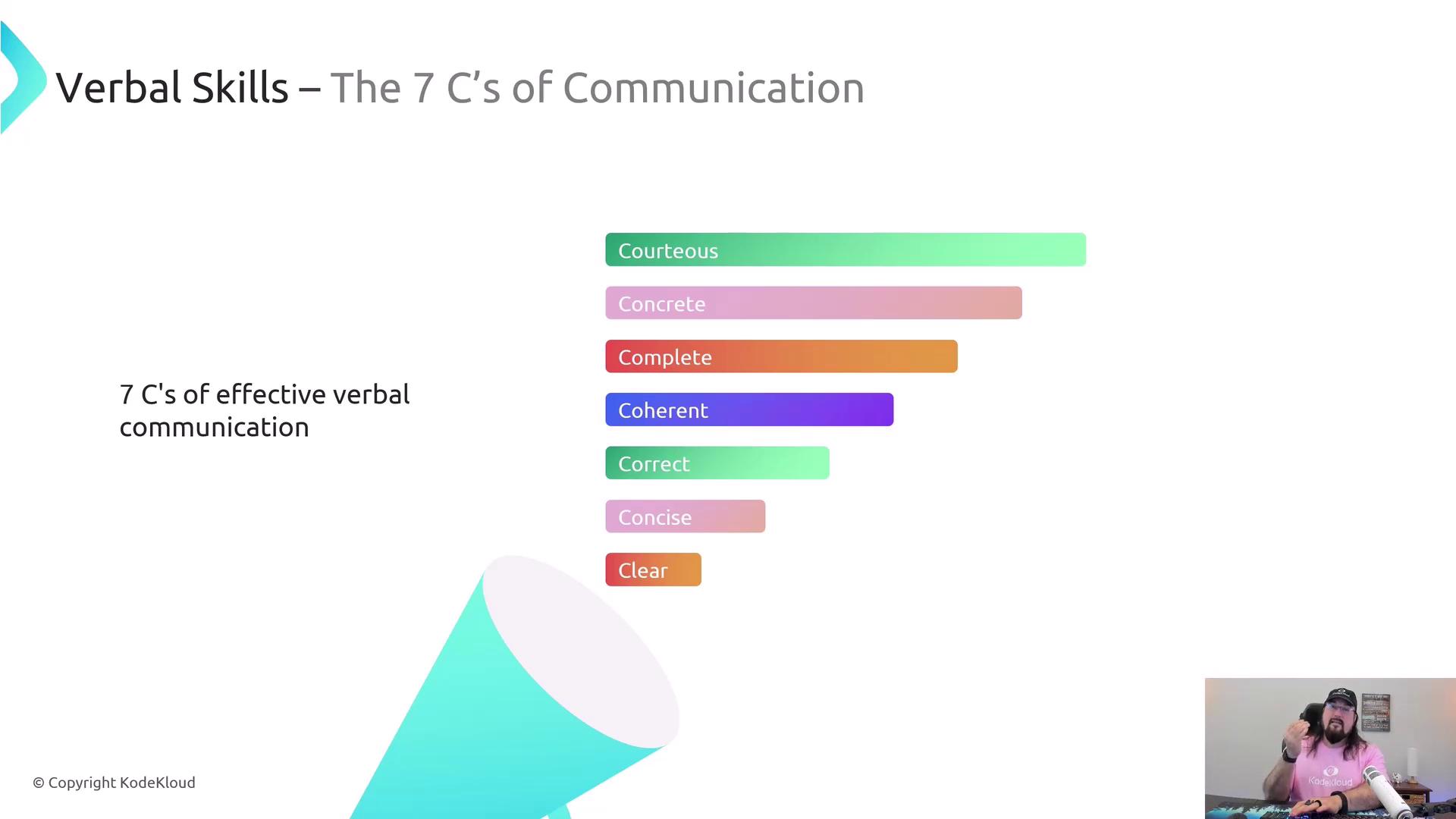
1. Be Clear
Clear communication relies on simple, precise vocabulary and a logical sequence. Avoid assuming everyone knows industry acronyms.
Note
Spell out acronyms on first mention. For example:
“Amazon Web Services (AWS)” and “Google Cloud Platform (GCP)”.
Then you can safely use “AWS” and “GCP” throughout.
Example:
“Amazon Web Services (AWS) and Google Cloud Platform (GCP) provide scalable, reliable cloud services. In this tutorial, we’ll refer to them as AWS and GCP.”
Speak slowly, enunciate clearly, and focus on two or three key points per session.
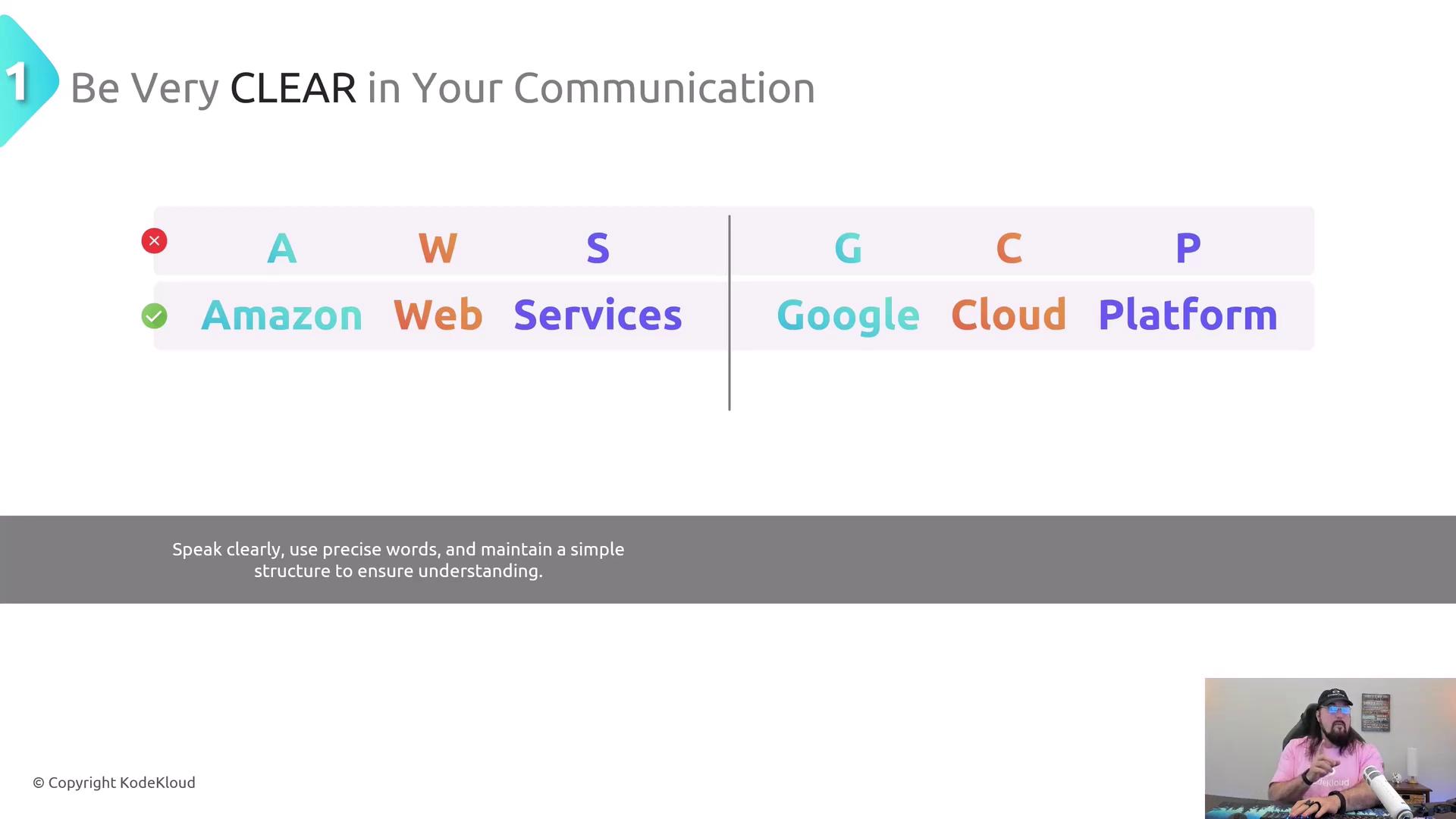
2. Be Concise
Conciseness means delivering maximum value with minimal words. Compare:
Long version:
“Utilizing Amazon Web Services (AWS) and Google Cloud Platform (GCP) for cloud computing infrastructure will provide businesses with a wide array of scalable, reliable, cost-effective solutions, enabling them to efficiently manage their data storage, processing, and application deployment needs.”
Concise version:
“Using AWS and GCP offers scalable, reliable, and cost-effective cloud solutions for managing data and applications.”
Note
Adjust brevity based on audience expertise. A technical team may handle more details, while executives often prefer high-level summaries.
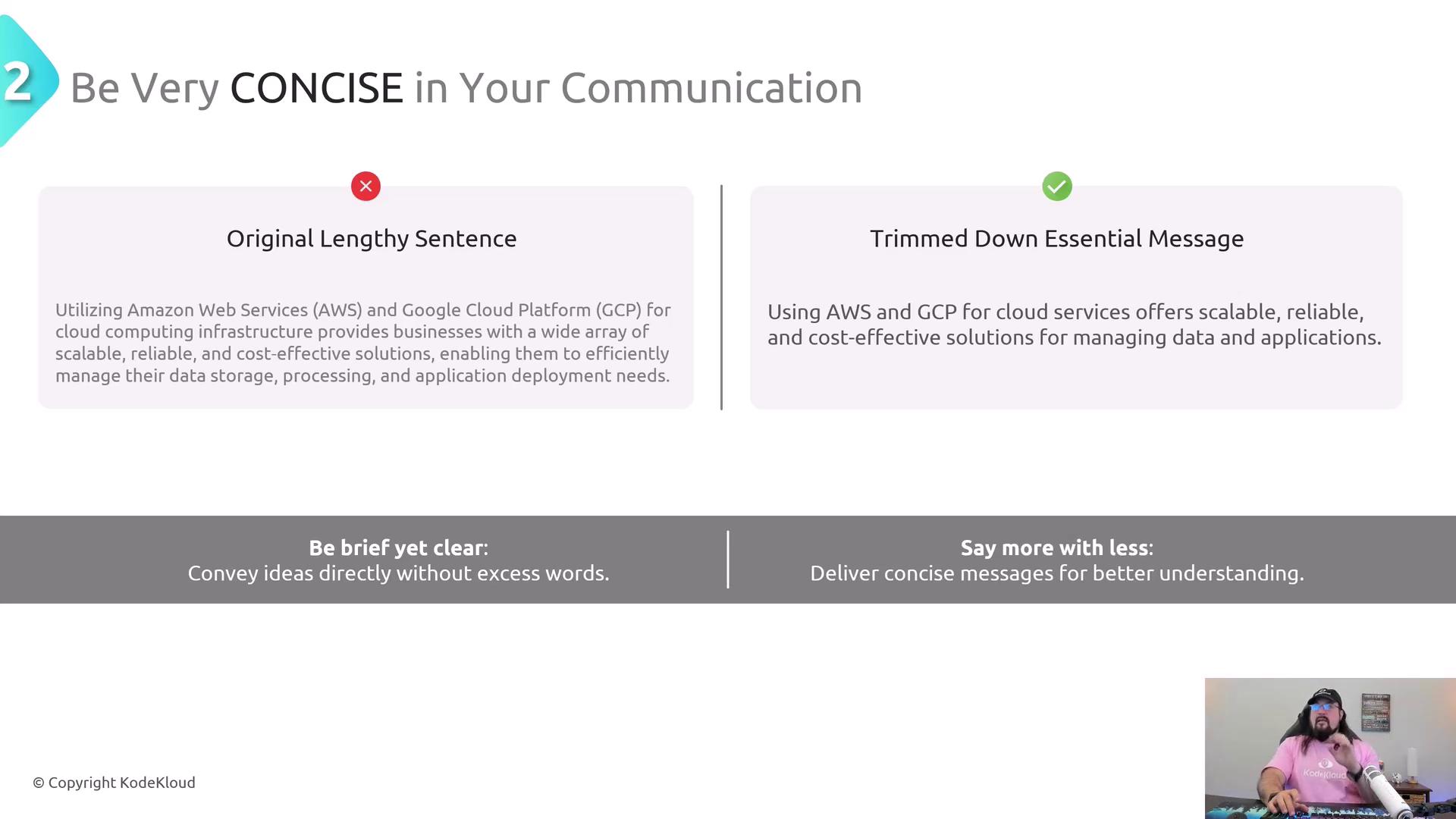
3. Be Correct
Accuracy is crucial. Use precise terms, factual data, and correct pronunciation. Avoid broad statements that lack evidence.
- Vague: “Cloud computing is always more expensive than on-premises.”
- Precise: “Cloud costs may exceed on-premises in high-utilization scenarios, but can be more economical for variable workloads.”
Warning
Avoid absolute claims unless you have data to back them up. Misstatements can damage your professional credibility.
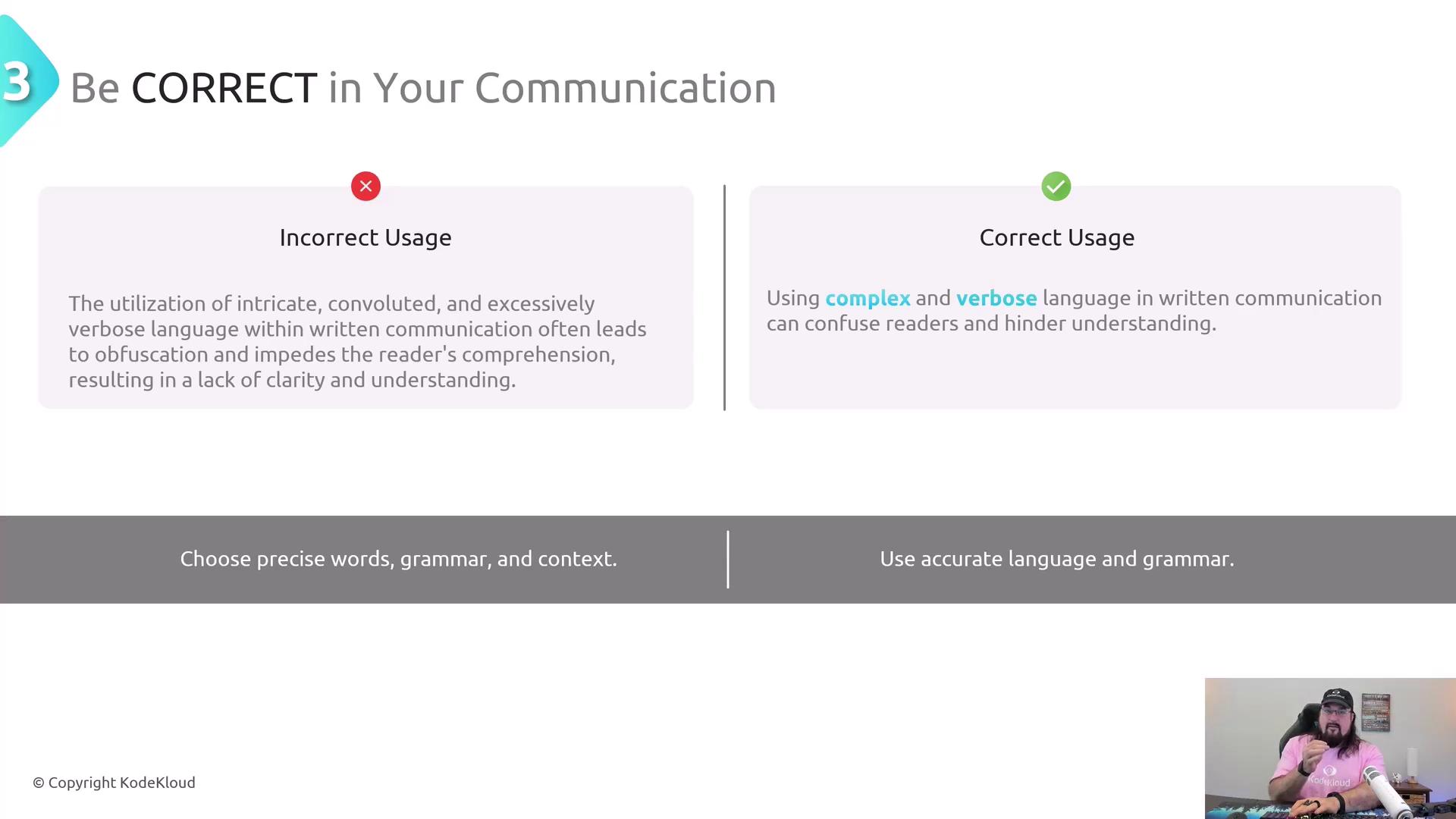
4. Be Coherent
Logical structure helps your audience follow along. A typical outline:
- Introduce the topic
- Present main points
- Share supporting details
- Conclude and propose next steps
Incoherent example:
“Our project deadline is next month. We had pizza for lunch. We need to speed up the work. Did you see the game last night?”
Coherent example:
- Topic: “Our project deadline is next month.”
- Main point: “We’re currently behind schedule.”
- Details: “Last week’s production issue set us back by a week.”
- Next step: “Let’s meet tomorrow to resolve blockers and realign our timeline.”
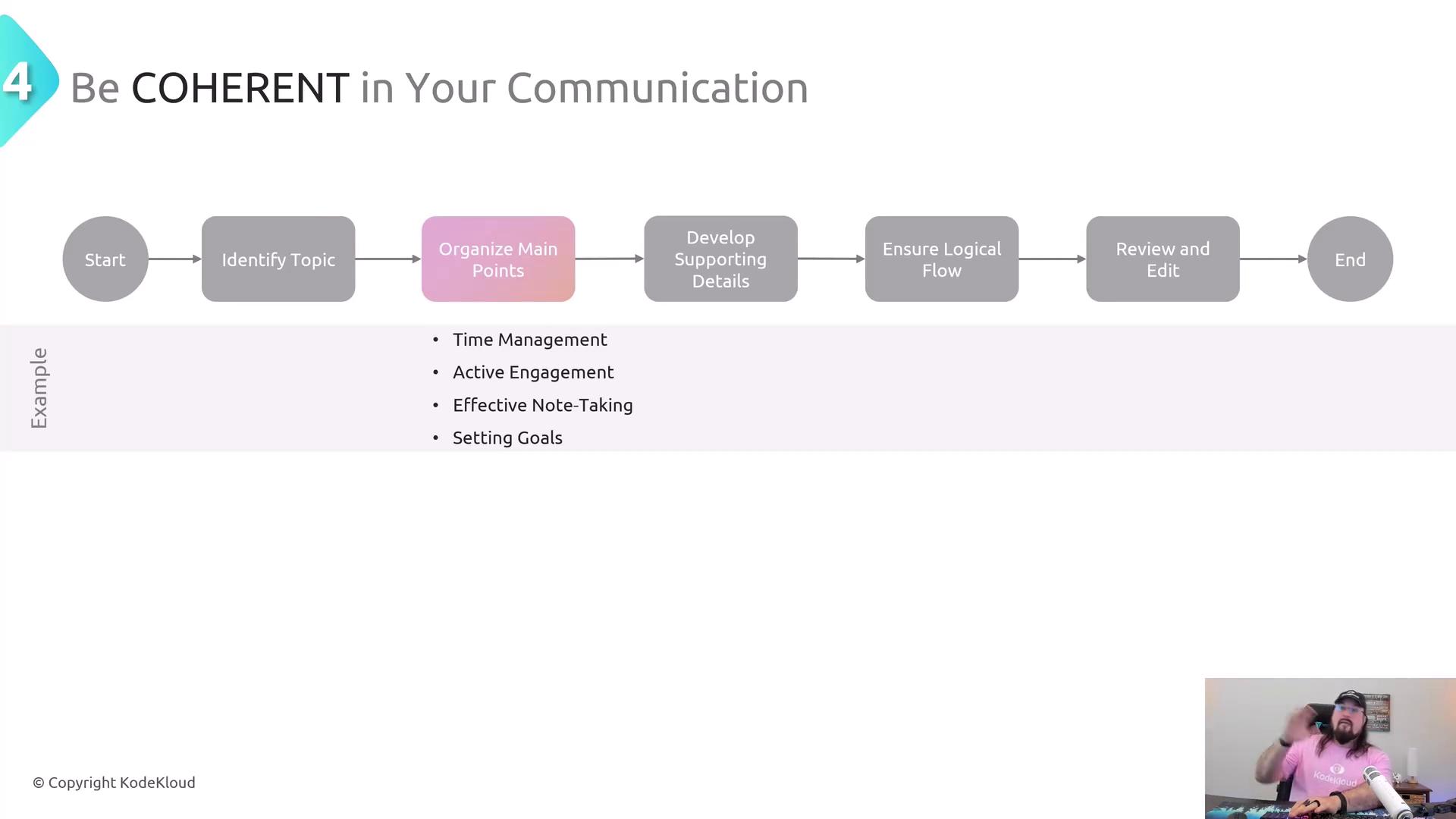
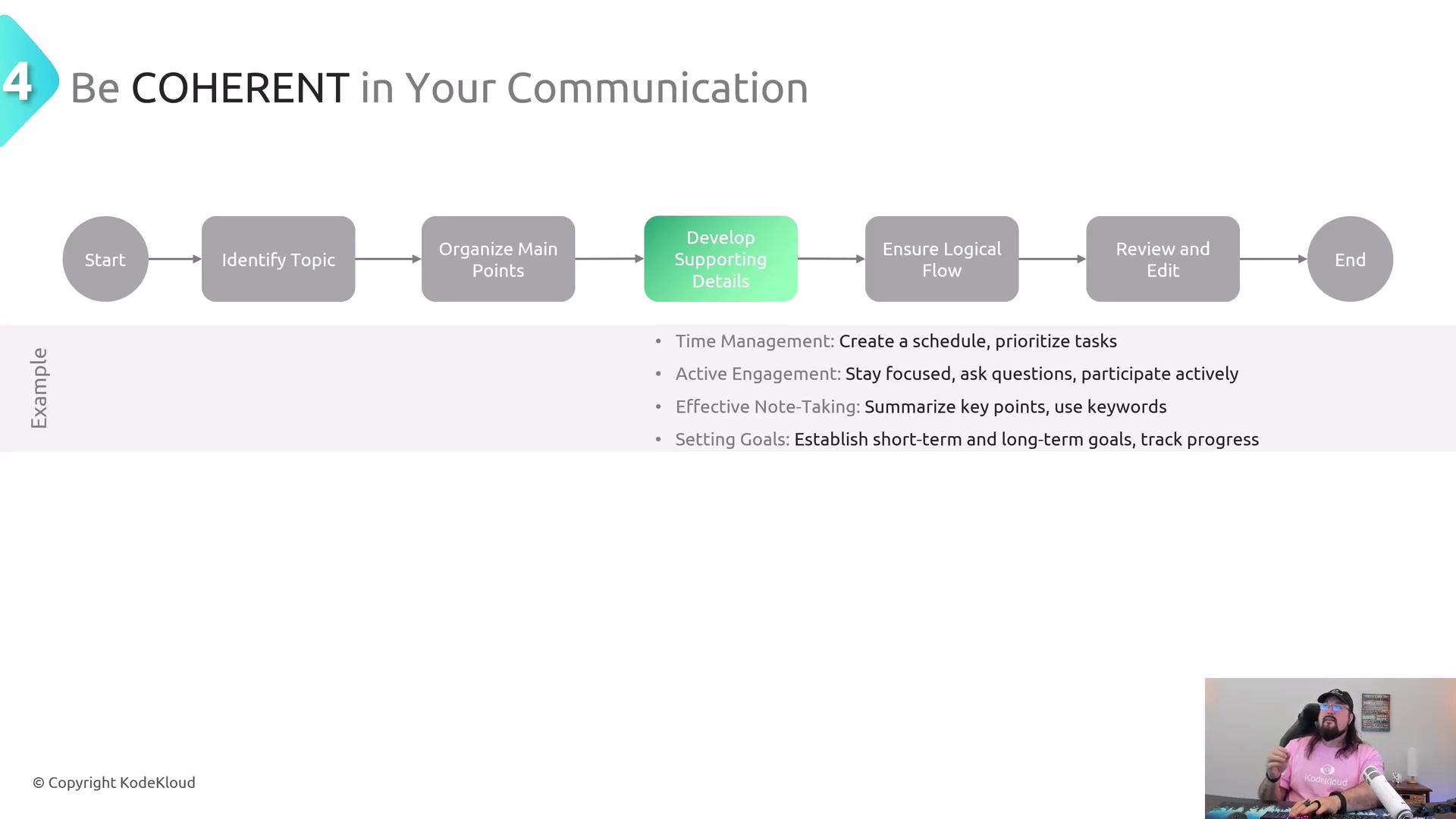
5. Be Complete
Ensure your audience has all the details they need to act. A meeting invite should cover the 5 W’s:
| Element | Description | Example |
|---|---|---|
| Who | Participants | Dev Team, QA, Product Owner |
| What | Subject | Sprint Retrospective |
| When | Date & Time | March 15, 10:00 AM |
| Where | Location/Link | Zoom: zoom.us/j/123456789 |
| Why | Purpose | Identify improvements for next sprint |
Include objectives, materials, and any prerequisites. This prevents follow-up questions and delays.
6. Be Concrete
Use specific examples and data to make ideas tangible. Replace:
“Implementing effective marketing strategies is crucial for business success.”
With:
“Launching a targeted social media campaign, email newsletter, and SEO overhaul will boost brand visibility by 30% over three months.”
These specifics help your audience visualize outcomes and understand steps.
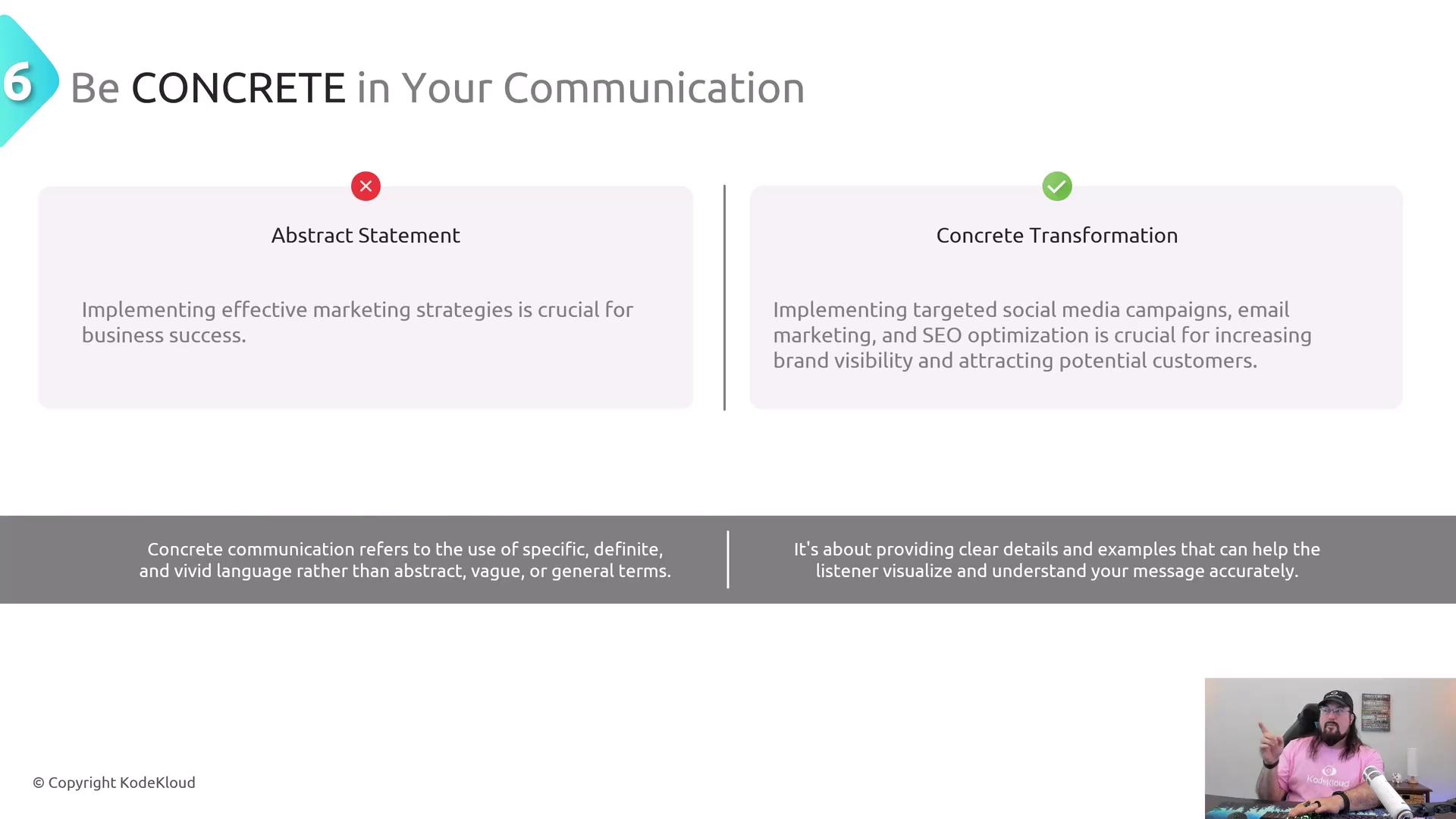
7. Be Courteous
A respectful tone fosters collaboration. Instead of:
“I need that report now. Why haven’t you finished it yet?”
Try:
“Could you please send the report at your earliest convenience? Thanks for your hard work.”
Note
A positive and polite approach builds rapport and motivates your team.
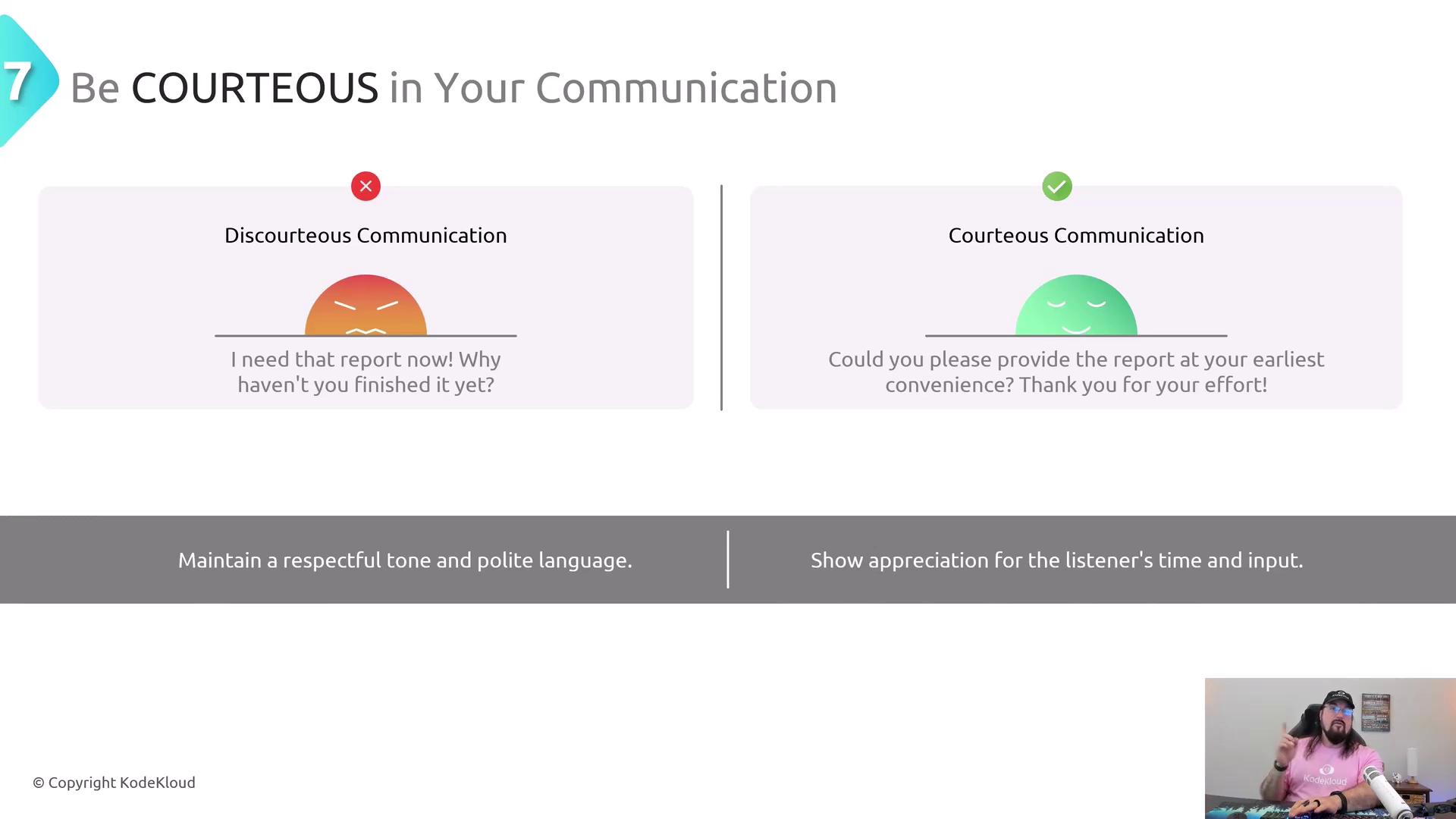
Bringing It All Together
Balance the 7 C’s for maximum impact:
- Clear: Simple language
- Concise: Brief delivery
- Correct: Fact-based accuracy
- Coherent: Logical structure
- Complete: All necessary details
- Concrete: Specific examples
- Courteous: Respectful tone
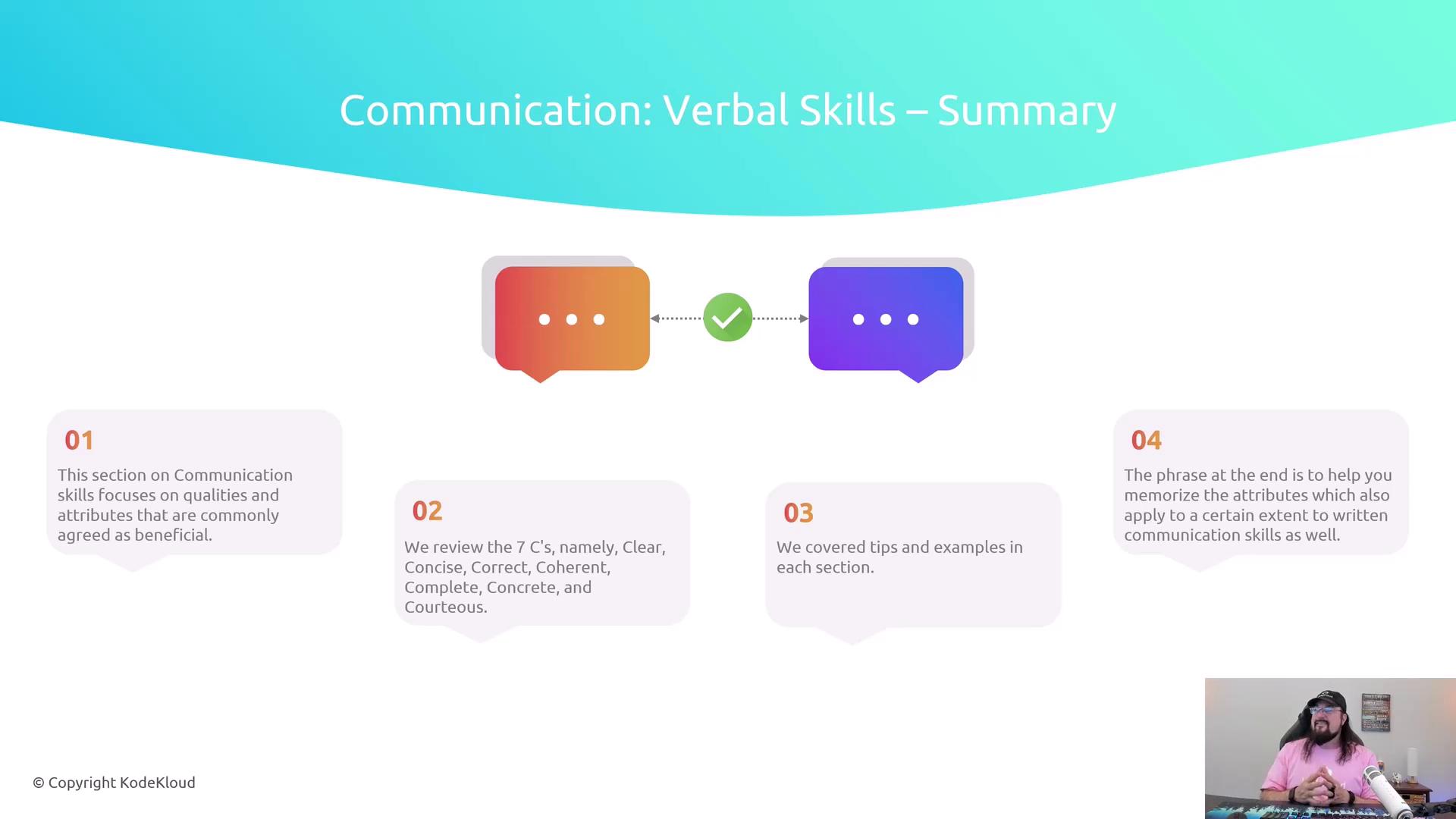
Further Reading
For questions or feedback, visit the KodeKloud Forums or contact [email protected].
Watch Video
Watch video content